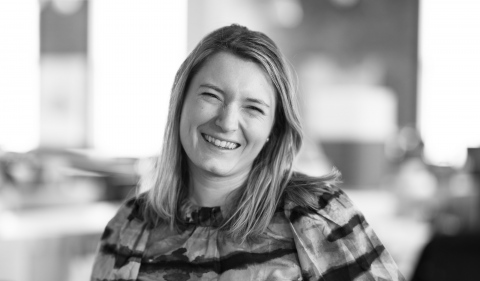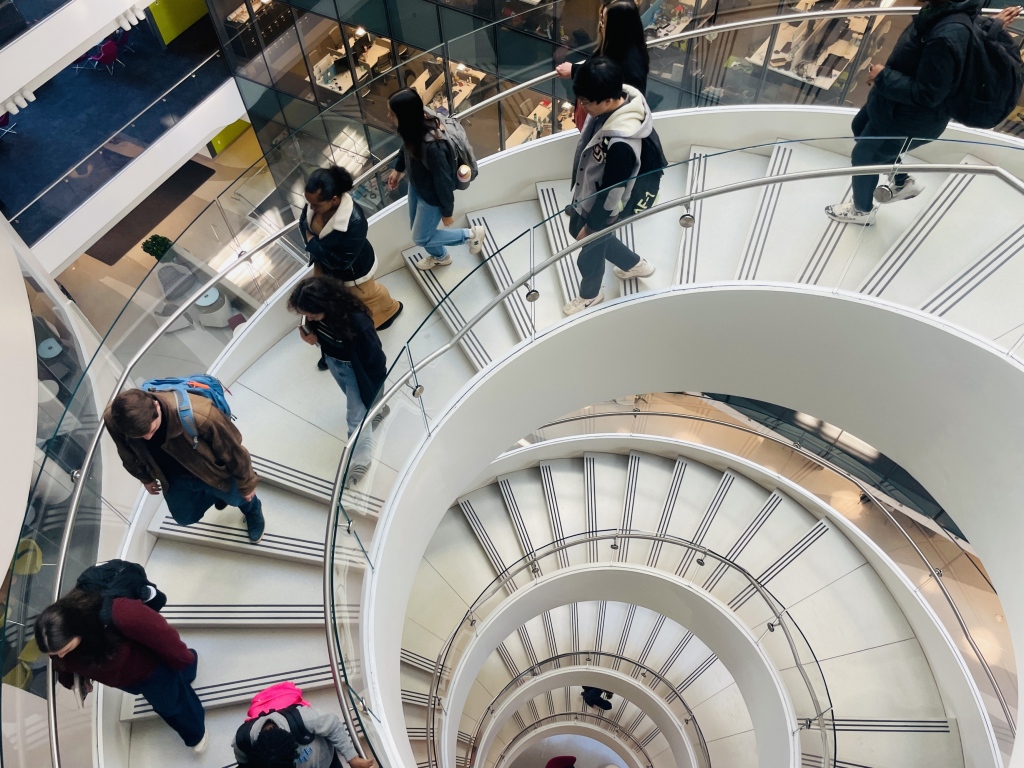
The OpenLAB Studio is taught by Kevin Sullivan, Denise Dea, Parke MacDowell and Laurie Booth at PAYETTE, and Robert Dunay and Shelley Martin at Virginia Tech. Read more about the studio here.
We know the power of experiencing a space firsthand. With this ethos at the forefront, our students have been incredibly active this semester, traveling to PAYETTE projects at Northeastern University, a research building in Cambridge and the University of Connecticut, while also visiting non-PAYETTE affiliated locales such as Phillips Exeter Academy and the North End Sliver House.
Below are some student reflections from each of these excursions.
Phillips Exeter Academy
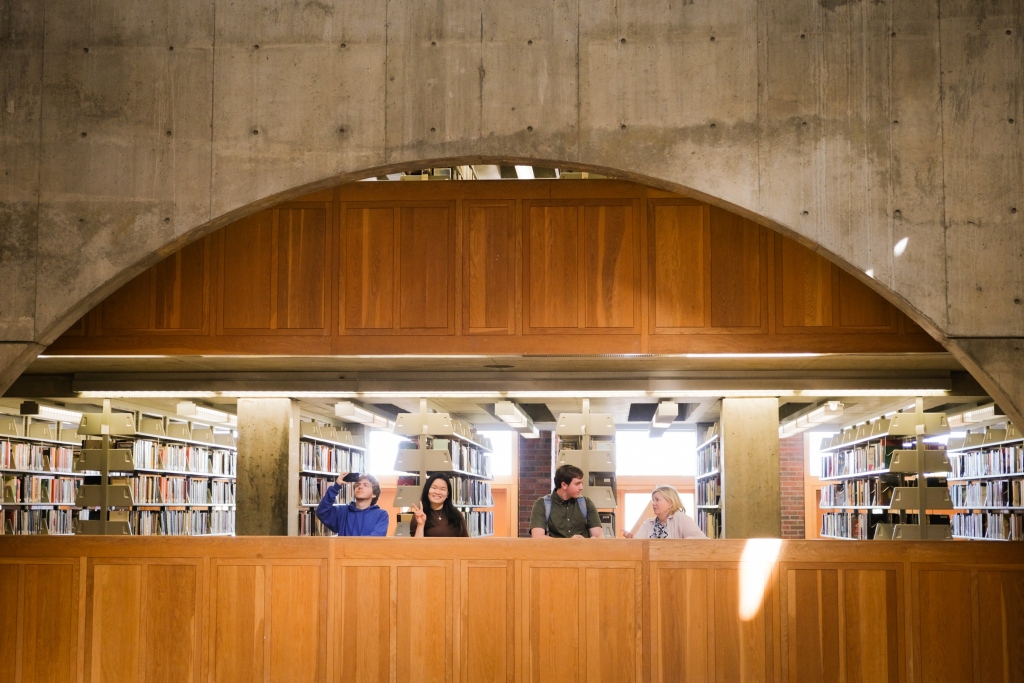
My first experience with the Exeter Library was through the Manual of Section, which offers a beautiful section perspective of the building. Seeing the space in person offered a new quality of the space as the concrete 'X' posed as a heavy mass almost looming above the atrium. This feature had such a large impact on each of us that we circled back to sketch it and take in the small feeling it posed on the occupants beneath it.
Elena Ahree Marrah
Seeing the Exeter Library was a moment of realizing that great architecture is real. The opportunity to tour the library with the campus architect was enlightening; exploring the space was an intimate experience I haven’t had in a library before. The individual reading nooks made the large spaces feel that much more impressive.
Phillip Becher
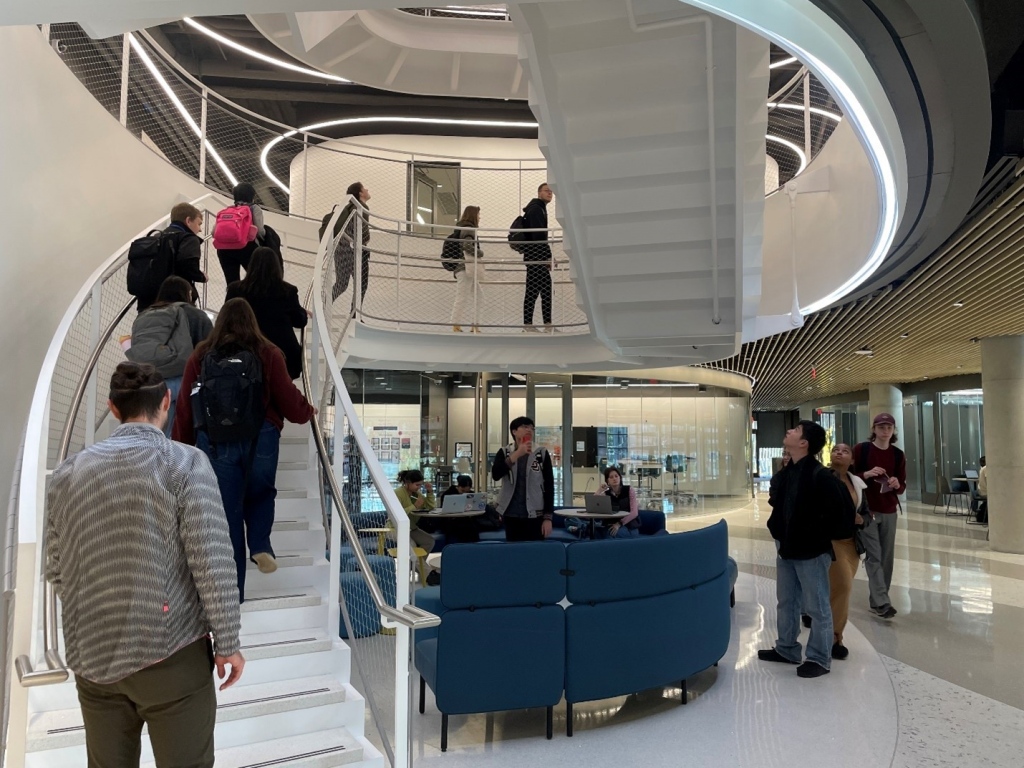
It was fascinating to learn the roles of the ISEC, EXP, and the PedX bridge in Northeastern University’s campus fabric and how they all play off of each other. The bridge literally crosses train tracks to link the established end of campus with the newer campus, creating a metaphor and a physical experience all wrapped into one.
Savannah Paap
ISEC is warm, and fluid, reminding you of nature, whereas EXP is cool, almost sci-fi like, but still has the similar fluid language to ISEC as well as the PedX bridge. The three are extremely different experiences but still speak to one another.
Stella Shin

Visting a research building in Cambridge currently under construction was an exciting experience. A storm was approaching during our tour, so we climbed to the building's uniquely sloped roof to catch the view before it rained. We were able to see the city of Cambridge unlike anything else, while also being able to appreciate the sloping roof that hides the building systems. As we made our way down, we paused on scaffolding under the building’s skylights, and saw how their continuous forms were designed. As we continued onward, we saw the elaborate programmatic choices that were elegantly solved by the building and the building’s dynamic facade and cantilevered ground plane.
Andrew Vitaliti
Visiting a research building in Cambridge during the construction phase and seeing the facade, skylight, and atrium elegantly coming together was a unique opportunity. The intricate details convey the thoughtful design decisions.
Ka Fong Kou
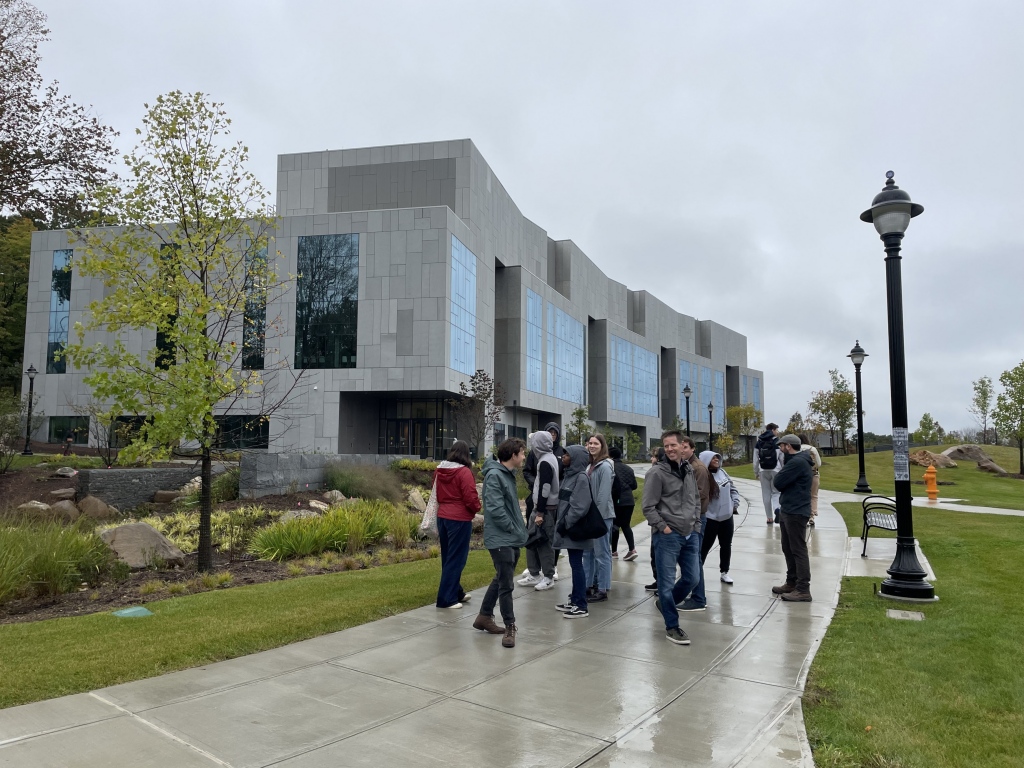
While it was a cold and rainy day, we still had fun and huddled over an exhaust grate for warmth as we inspected the exterior panels, enjoying the subtle difference between the zinc and concrete cladding of UConn’s Science 1. A real highlight of the tour was learning that the service doors on the rear of the building were designed to be hidden in the façade by mimicking the larger pattern of panels. We saw one example that was almost seamlessly hidden, minus the pathway that gave away the fun surprise.
Ashley Broyles
Sliver House
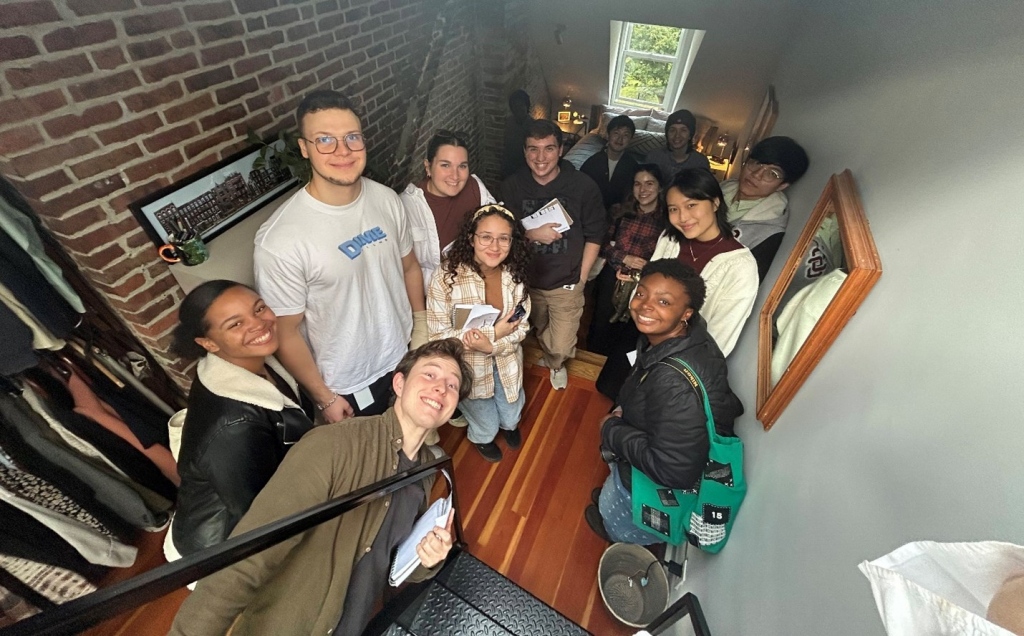
This project is about efficiency in every move. There is something truly magical in seeing a space function to its utmost capability. A building that is 10 feet wide on its exterior suddenly feels much larger when you step inside. With the scale of our studio prompt sites, this visit was critical in our team's project proposal.
Berk Oral
The Sliver house has some of the smallest horizontal dimensions but feels just as functional for a family of four as any other typical home you would come across. It reminds me as a young designer of the importance in the organization of space rather than the creation of it.
Cholena Jackson
Read more about the studio
Boston OpenLAB Studio – Year Three

